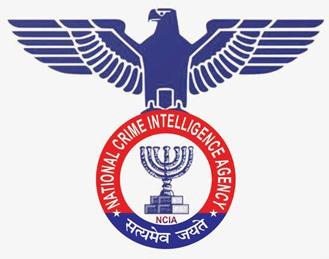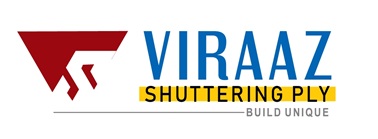LIQUIDATION
Civil litigation, Criminal , Commercial Litigation, Arbitration Proceedings, Intellectual Property Rights , Personal & Family Litigation, Income Tax Litigation, GST , Company Law , Consumer Case , Mediation & Conciliation.
3000 +
Happy clients
300 +
Advocate, CA, CS
10 +
Associates Offices
Request A Call Back
Liquidation under Insolvency and Bankruptcy Code 2016
The Insolvency and Bankruptcy Code, 2016 (“IBC”), which attempts to completely revamp the policy approach to insolvency and company rehabilitation, is one of the most significant pieces of legislation to be enacted in the last several years. The basic problem The word “insolvent” means that the liabilities of a person, company, or other legal entity exceed its assets. Another way to understand it is that the company owes more money than it has or is likely to make. Take the example of a company manufacturing DVDs and CD-ROMs. It has employees to whom it pays salaries and suppliers from whom it purchases raw materials, machinery, and other items required for production. It may need to pay rent on the land where its factory is located, it will need to repay the loans it has taken (and the interest on those loans) to its bankers, and it will need to pay taxes to the government and would like to pay dividends to its shareholders.

The company needs to earn enough from its sales to make all these payments. What happens when the company becomes insolvent and cannot make all the payments it is supposed to? If they do not get paid, all the stakeholders of a company have their own individual remedies. They can file suits under the Code of Civil Procedure, 1908 for the recovery of their dues. Some of them also have the benefit of specialised legislation such as debt recovery laws, tax laws, and labour laws. At any given point of time, there will typically be various claims being made against the company. However, if the basic problem is that the company is not generating enough revenues to pay its dues, individual actions may not be enough for the claimants to recover their dues and for the company to pay all its debts.
The liquidation value is typically inferior to the value of the company as a going concern. Perhaps the company in our example above is facing insolvency because with the advances in online data transfer, it is not finding enough customers for its products. If the company is wound up and its assets sold, not much value will be obtained from the sale of manufacturing equipment and technology for a product that is becoming obsolete. The liquidation value would be very low in this case. Maybe there is a business solution. Perhaps the company can diversify into manufacturing other more relevant electronic products. Perhaps a change in management will be able to revive it. Perhaps the company will become viable if its banks agree to waive some part of the loans due to them. A liquidation also has various other public costs. The employees will lose their jobs, the suppliers will lose a customer, the company’s customers will lose a supplier, and the government may lose the taxes which the company is supposed to pay and may pay in the future if it is revived. The cost of the liquidation process can also be significant.
Rehabilitation v Liquidation
The most drastic solution is liquidation or winding up. The company is shut down and all its assets are sold and the proceeds distributed to its various creditors. The value that can be obtained from liquidating and selling the assets of the company is generally referred to as “liquidation value”. But there is a basic question that needs to be answered before a liquidation or winding up is contemplated – what if it is possible for the company to be revived and changes made in its business which may enable it to earn enough in the future and pay off all its creditors? The value of the company, taking into account the potential future earnings of the company’s business is referred to as its value as a “going concern”.
Legal Framework prior to the IBC

A liquidation regime was previously set out under Section 433 and 434 of the Companies Act, 1956 (later Section 271 of the Companies Act, 2013), which dealt with winding up of a company. Under Section 433(e), a creditor could approach a court (later, the National Company Law Tribunal) for winding up a company on the grounds of the company’s inability to pay debts. Under the provisions of the Act and the jurisprudence that developed under it, the court had the discretion to determine whether the company should be wound up.
This was an imperfect situation. Whether or not a company has the capability to be revived is, apart from being a business question, also a speculative one with many different views possible, each involving an analysis of financial projections in different fact scenarios. A court perhaps would not necessarily possess the business acumen to take a firm view under such circumstances. Moreover, the process was not constructive. If it was determined that the company should not be wound up, there was no revival plan that would be binding on all the stakeholders. The Sick Industrial Companies Act, 1986 (“SICA”) attempted to address this. It provided that the Board for Industrial and Financial Reconstruction could sanction a scheme for the rehabilitation of a “sick company”, that is, a company which has at the end of any financial year, accumulated losses equal to or exceeding its entire net worth. An essential part of the Act was that while the scheme was being prepared and approved, there was a moratorium on taking any legal action against the company for recovery of debts, enforcement of security, winding up, etc. Unfortunately, SICA was largely unsuccessful as companies ended up staying within the protection of the SICA moratorium for years without any successful scheme for rehabilitation. The new code on insolvency and bankruptcy was born out of the failures of the existing laws to effectively deal with company rehabilitation and liquidation, and in the backdrop of failing businesses and mounting debts owed to the banking sector, particularly public sector banks. We will take a look at the framework and provisions of this code in another post.
The 5 steps to liquidation or resolution under India’s new insolvency law

The Insolvency and Bankruptcy Code, 2016 (“IBC”), as I’ve highlighted previously, combines in a single legislation, the processes for resolution or liquidation of corporate persons. Let’s look the various steps involved.
Step 1 – Application to the NCLT
A financial or operational creditor of a company, or the company itself, can apply to the National Company Law Tribunal (“NCLT”) for an order to admit that company (or “Corporate Debtor” as the IBC calls it) into the corporate insolvency resolution process (“CIRP”). The creditor has to show that there has been a default in the payment of its debt exceeding 1 lakh rupees. The NCLT has to pass an order either admitting or denying the application within 14 days (although the National Company Law Appellate Tribunal (“NCLAT”) in J.K. Jute Mills Co. v. M/s Surendra Trading Co. has now held that this provision is merely directory).
A financial or operational creditor of a company, or the company itself, can apply to the National Company Law Tribunal (“NCLT”) for an order to admit that company (or “Corporate Debtor” as the IBC calls it) into the corporate insolvency resolution process (“CIRP”). The creditor has to show that there has been a default in the payment of its debt exceeding 1 lakh rupees. The NCLT has to pass an order either admitting or denying the application within 14 days (although the National Company Law Appellate Tribunal (“NCLAT”) in J.K. Jute Mills Co. v. M/s Surendra Trading Co. has now held that this provision is merely directory).A financial creditor and an operational creditor need to meet slightly different evidentiary thresholds when making their applications before the NCLT. A financial creditor has to show the record of the default. The IBC has created a new class of record keepers called “Information Utilities” but since these have not yet been set up, the records maintained in statements of accounts, bankers’ book certificates, and credit information bureaus are currently being used.
In Innoventive Industries Limited v ICICI Bank Limited, one of the earliest cases under the IBC, the NCLAT clarified that the scope of the NCLT’s enquiry in such an application was limited to the question of whether or not a default existed, and that it should not enquire further into the circumstances of the default, or whether it was appropriate for the corporate debtor to be admitted into CIRP. The Supreme Court recently endorsed this position.
On the other hand, an operational creditor (more on the distinction between financial and operational creditors in a later article) needs to first make a demand for his unpaid debt and it is open to the corporate debtor to defend the claim on the basis that there is an ongoing dispute.
Step 2 – CRIP starts; Interim Resolution Professional takes over; moratorium sets in
Once a corporate debtor is admitted into the CIRP, its board of directors is suspended and its management is placed under an independent “interim resolution professional”. From this point on and until the end of the CIRP, the erstwhile management ceases to have any control over the affairs of the company.
Simultaneously, a moratorium takes effect which prohibits: (a) the continuation or initiation of any legal proceedings against the corporate debtor, (b) the transfer of its assets, (c) the enforcement of any security interest, (d) the recovery of any property from it by an owner or lessor, and (e) the suspension or termination of the supply of essential goods and services to it. The moratorium lasts till the corporate debtor is in CIRP.
It is important to note here that the moratorium does not extend to key business contracts entered into by the corporate debtor. Many contracts stipulate insolvency, bankruptcy, and analogous proceedings as events that trigger termination and the mere admission of the corporate debtor into CIRP could give rise to the termination of its key business contracts.
Step 3 – Verification and classification of claims, appointment of the resolution professional: The interim resolution professional will then invite and verify claims made by the corporate debtor’s creditors, classify them, and within 30 days of the admission into CIRP, form the Committee of Creditors (“COC”), comprising all the financial creditors of the corporate debtor.
Step 4 – Appointment of the resolution professional
The COC then appoints an independent person to function as the “resolution professional” for the remainder of the CIRP term. The resolution professional may be the same person as the interim resolution professional, or someone else, depending on what the COC wants.
Step 5 – Approval of the “resolution plan” or liquidation
Within 180 days from the start of the CIRP, a resolution plan for the revival of the company needs to be approved by creditors holding 75% of the financial debt. The NCLT can extend this by another 90 days.
Any person, including the erstwhile management, the creditors, or a third party can propose such a plan. As it is the responsibility of the resolution professional to verify that the plan meets the criteria set out in the IBC, it would seem that the Resolution Professional cannot propose this plan, although this is not expressly prohibited under the IBC. I’ll discuss more about the resolution plan in a later article.
If a plan is approved within this period and is sanctioned by the NCLT, it is adopted and becomes binding on all “stakeholders” involved in the CIRP. The term “stakeholders” has not been defined and while the IBC expressly mentions that the resolution plan will bind the creditors, employees, members, and guarantors, it is currently not clear what other stakeholders a resolution plan can bind.
And if no resolution plan is approved in this period, the NCLT is required to order the liquidation of the corporate debtor. If an order of liquidation is passed, a liquidator will be appointed by the COC to sell the assets of the corporate debtor and distribute the assets among the stakeholders. The distribution will be made in accordance with a “priority waterfall” set out in Section 53 of the IBC. This will be addressed in a later article.
Time is of the essence, limited judicial role
The IBC, by providing for various time limits in the process, has introduces a “time” element that was missing from previous legislations. Significantly, liquidation has to be ordered compulsorily if a resolution is not worked out within 180 days (or the extended 270 days). The expectation is that stakeholders will be forced to work together in a constructive manner to avoid liquidation.
Another significant deviation from the previous regime is that financial creditors drive this process, not the courts. Ultimately, any resolution plan has to be approved by the COC members holding 75% of the financial debt. The NCLT needs to look only at some parameters set out in the IBC while approving the resolution plan. This is quite a contrast to the earlier winding up regime, where a court would determine whether a company should be admitted into winding up or not.















































